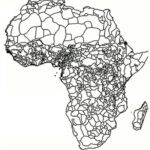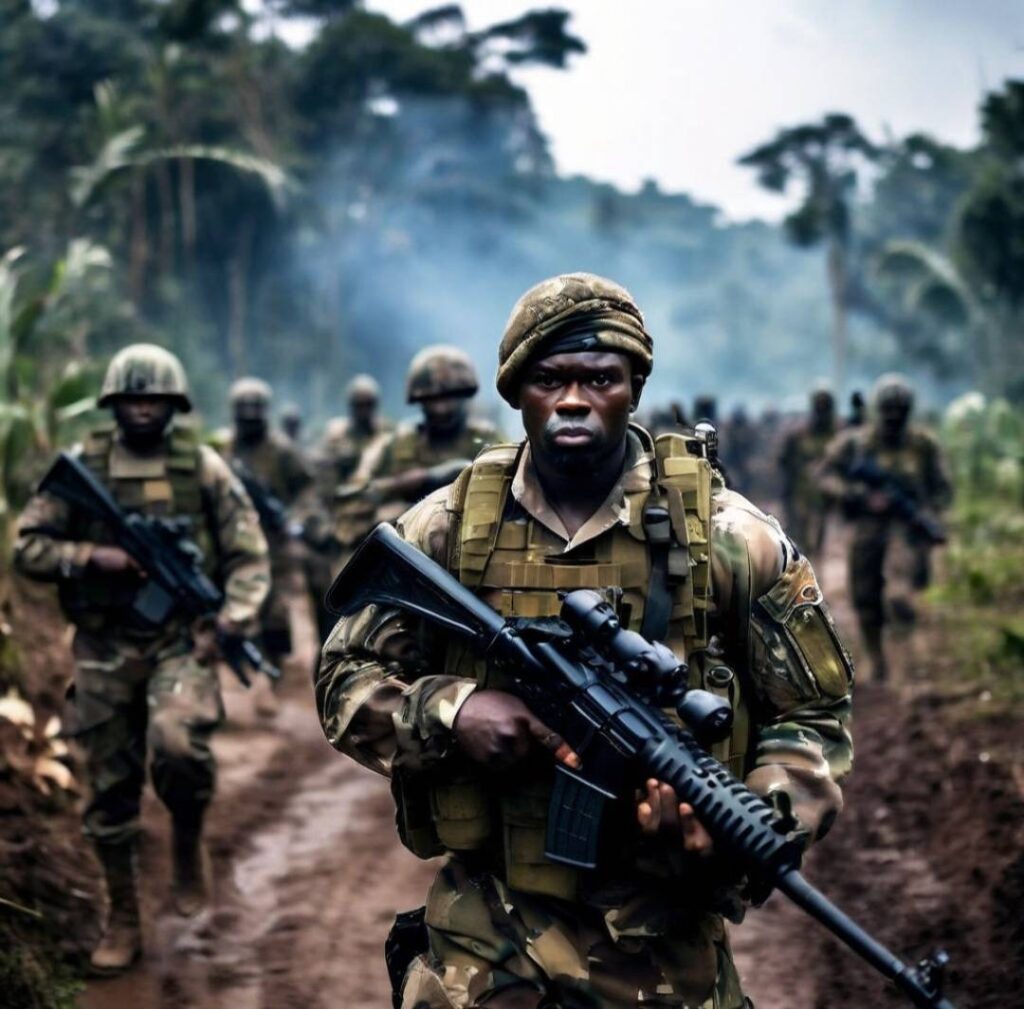In the dark volcanic soil surrounding the regional capital of Goma, the commanders-in-chief of a newly formed intervention force in Eastern Congo arrived in their jungle-green armored vehicles at the end of February. They had reason to rejoice as M23, a rebel group backed by Rwanda, had been bombarding Sake and posing a threat to Goma for weeks. Unlike previous foreign troops in Congo, this new peacekeeping force successfully pushed back M23. However, the rebel group shifted its focus to another area and, at the start of March, initiated a new front seventy kilometers north of Goma near Nyanzale. The key question now is: will these commanders launch a major offensive against M23?
It seems like an endless war in Eastern Congo and there is a coming and going of foreign soldiers who want to put an end to it. The 3,000 fresh soldiers largely come from South Africa, Malawi and Tanzania. Elsewhere in the area, soldiers from the 13,000-strong UN peacekeeping force have begun to pack their bags; they will have left by the end of this year. In December, an East African force had left already after barely a year. It seems an inevitable fate of foreign interventions in the Democratic Republic of Congo: they fail and security deteriorates further. More than half of North Kivu province is now under M23 control. Where the UN and the East African military avoided confrontation and made deals, the new peacekeeping force from southern Africa must face confrontation. That is exactly what Congolese President Félix Tshisekedi wants, but this means a larger regional conflict with Rwanda is looming.
Seven million displaced people
Tensions are rising rapidly, despite a few diplomatic meetings, such as at the recently concluded African Union summit in Addis Ababa. In the first weeks of their deployment, four South Africans were killed, bombs fell on the university and airport of Goma, peacekeepers came under fire and America and France called on Rwanda to withdraw troops and anti-aircraft guns from Congo. Rwanda, which has always denied its involvement with M23, warns of “a dramatic military concentration” of the Congolese army with the aim of driving M23 and Congolese Tutsis to neighboring countries. In recent days, once more tens of thousands of Congolese have fled their homes or meager shelters in displaced persons camps as escalating fighting has seen the use of increasingly heavy weapons on civilian targets; the total number of displaced people in Congo now amounts to seven million citizens.
The rise of widespread insecurity began after the genocide in Rwanda in 1994, when a million Rwandans migrated to Eastern Congo. Despite the low population density in Congo, tribal rivalries intensified. Local residents started arming themselves, and certain rebel factions established bases in the dense vegetation surrounding the volcanoes. Numerous armed groups are currently active, with some estimates suggesting there are over a hundred, capitalizing on the availability of easily accessible raw materials like gold. M23 exerts control over a significant portion of Masisi territory, where the valuable ore coltan is extracted. Among the array of insurgent organizations, two stand out: the Allied Democratic Forces (ADF) and M23. The ADF, known for its extreme brutality, poses a major threat to the civilian population, while M23 poses a significant challenge to the national army. The ADF has ties to IS, while M23 has connections to Rwanda.
“M23 is the best organized,” says a resident of the regional capital Goma. “They occupy areas, install their own administration and collect taxes. For the ADF, every citizen is a target.”
Rwandan interference
President Felix Tshisekedi has accused Rwanda of being the main foreign instigator, comparing Rwandan President Paul Kagame to Hitler. The M23 group, equipped with artillery and drones, is seen as a well-trained and modern army, unlike other factions in the region which are considered more disorganized. Reports from UN and US intelligence suggest that Rwandan government troops frequently collaborate with M23 during conflicts. M23 claims to be protecting the Tutsi population in Congo, the same ethnic group that supported Kagame’s rise to power in Rwanda. In 2012, M23 briefly took control of Goma. The soldiers of M23, predominantly Tutsis, are demanding to be integrated into the Congolese army. President Tshisekedi views M23 as a mere extension of Rwanda, refusing to engage in dialogue with the group and instead collaborating with a small rebel faction aiming to overthrow Kagame’s government.
“We feel cut off from the outside world,” complains a resident of Goma. All three access roads to the city of two million inhabitants lead to rebel territory. “After the battle at Sake, large numbers of displaced people have entered the city again, there is hardly any room for them anymore. And food prices are skyrocketing as not only M23 but also other rebel groups stop trucks with food crops to collect their taxes.”
European mercenaries
The government uses vigilantes and foreign mercenaries against M23. “To strengthen the defense of the country, we have set up reserve forces, the Wazalendo,” Thsisekedi said during an election rally in Goma in December, defending his poor results in improving security in the east.
Besides the civilian forces, numerous European mercenaries, referred to as private military entrepreneurs by the government, have joined the government army in combat. The primary issue lies in the inefficiency of the government army, which Tshisekedi has limited authority over, and which also profits from the abundance of raw materials in the east, similar to Rwanda and Uganda. In this state of armed chaos, no citizen can feel secure.
“Rwanda, together with Uganda, bears the main responsibility for the current crisis,” says opposition politician Espoir Ngalukiye in Goma, “but that does not remove responsibility from the Congolese authorities. Outsourcing security to foreign troops is not a solution. Congo must invest in its own security by building a strong army. Only that can remove the fear of conquest of Goma among its residents.”

